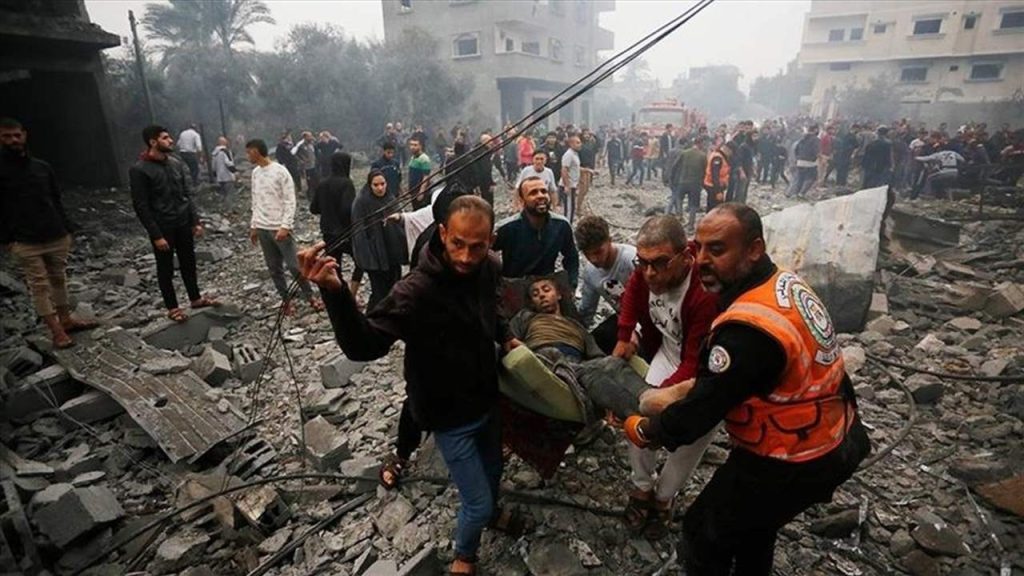Three Paths for Gaza: Israeli Security Expert Outlines Post-War Scenarios
Retired General Tamir Hayman warns against continued Hamas rule and urges a defined endgame—highlighting the need for a civilian alternative and long-term Israeli security control.

Watan-Tamir Hayman, head of the Institute for National Security Studies at Tel Aviv University and a retired general, believes there are three possible paths to achieving the goals of the war on Gaza—one of which is preferable.
-
The first option is to occupy the Gaza Strip and impose military rule.
-
The second is to impose a blockade on Gaza while weakening Hamas.
-
The third is to establish an alternative civilian government, with Hamas remaining underground, based on the Arab Peace Initiative.
In an article published on the Institute’s website, Hayman asks: What is the best (or least harmful) option among the three to achieve the war’s objectives in Gaza? And how can the challenges of each be addressed?
He argues that among these options, the diplomatic path—involving discussions around the Arab Initiative—is the only one capable of advancing Israel’s war goals at a relatively lower cost. However, the Israeli government has not adopted this path, as it believes it does not guarantee the full dismantling of Hamas’s military capabilities in Gaza.

Hayman: Military Pressure Without Strategy Leaves Israel in Limbo on Gaza
By excluding this diplomatic option, Israel is left only with military choices. Hayman writes:“In the first phase, Israel applies military pressure on Hamas to push for an extension of the initial hostage release agreement. If this path fails or stalls, the military confrontation will escalate, potentially leading to a situation where Israel controls most of the Gaza Strip—or launches a large-scale military operation, for which the Israeli army is preparing, involving the occupation of large areas of Gaza and the establishment of conditions for imposing military rule.”
According to Hayman, Israel—backed by the United States—is currently applying measured military pressure on Hamas and the Gaza Strip to extend the initial phase of the hostage release deal and to secure the release of additional live hostages, which is currently Israel’s top domestic priority.
However, he notes that despite this focus, there is no clear strategic vision guiding this path. Hamas still holds governing authority in Gaza, and even if more hostages are released, it is likely that Hamas retains others—either for leverage or because their burial locations are unknown. This reality makes targeting Hamas’s military and governance capabilities a central goal.
Hayman, a former head of Israeli military intelligence, notes that since the war broke out—and until the ceasefire, which later collapsed—the Israeli government decided not to impose military rule in Gaza, nor to adopt the idea of a blockade, due to legal concerns, U.S. restrictions under the Biden administration, and the understanding that Hamas’s continued rule is unacceptable.
As a result, strategic planning for the war was directed toward establishing an alternative civilian governance mechanism. However, Israel has not defined who this alternative governing body should be.
He sees another major dilemma: Hamas’s loyalty to the ideology of the Muslim Brotherhood, which makes its complete eradication through military means unfeasible. He notes that the Brotherhood has not disappeared from the West Bank, nor from Egypt, Syria, Jordan—or even within Israel—despite military pressure.
From this, he concludes:“It was clear from the start that even with an alternative civilian government, elements of Hamas and the Muslim Brotherhood would remain in Gaza. The only solution is for Israel to retain security control.”

Summary and Recommendations
At the end of his in-depth analysis, Hayman states that before intensifying military pressure on Gaza, a clear “final status” goal must be defined: Which of the three scenarios serves as the political framework for military action?
“Each of these goals requires a distinct operational structure. Therefore, the decision must be made before—not during—the maneuvering phase. Each of the three alternatives presents its own problems:
-
From a purely military perspective, military rule is the most effective.
-
From a broader national security perspective (including economy, society, army, diplomacy), the technocratic government model is preferable.
-
In any case, continued Hamas rule is the worst option and must be avoided, which is why the Gaza blockade scenario is not attractive.”
If the alternative civilian government is the least bad option, then its challenges must be addressed to prevent a Hezbollah-style model in Gaza—where a powerful armed militia exists within the state, paralyzing it and threatening its stability from within.
In this regard, Hayman argues that:
-
A security system must be established that allows Israel to continue striking Hamas’s capabilities as long as it exists.
-
Planning is needed to ensure the stability and survival of the alternative government, as Hamas will likely attempt to overthrow it.
-
Security components should be built into the new governance system to allow Israel to thwart threats, including a revised defense strategy for Israeli communities in the western Negev.
Most importantly, Hayman believes personal security must be addressed:“A Palestinian police force must be established within Gaza that works in coordination with Israel—similar to the security coordination between the Israeli military and the Palestinian Authority in the West Bank.”






